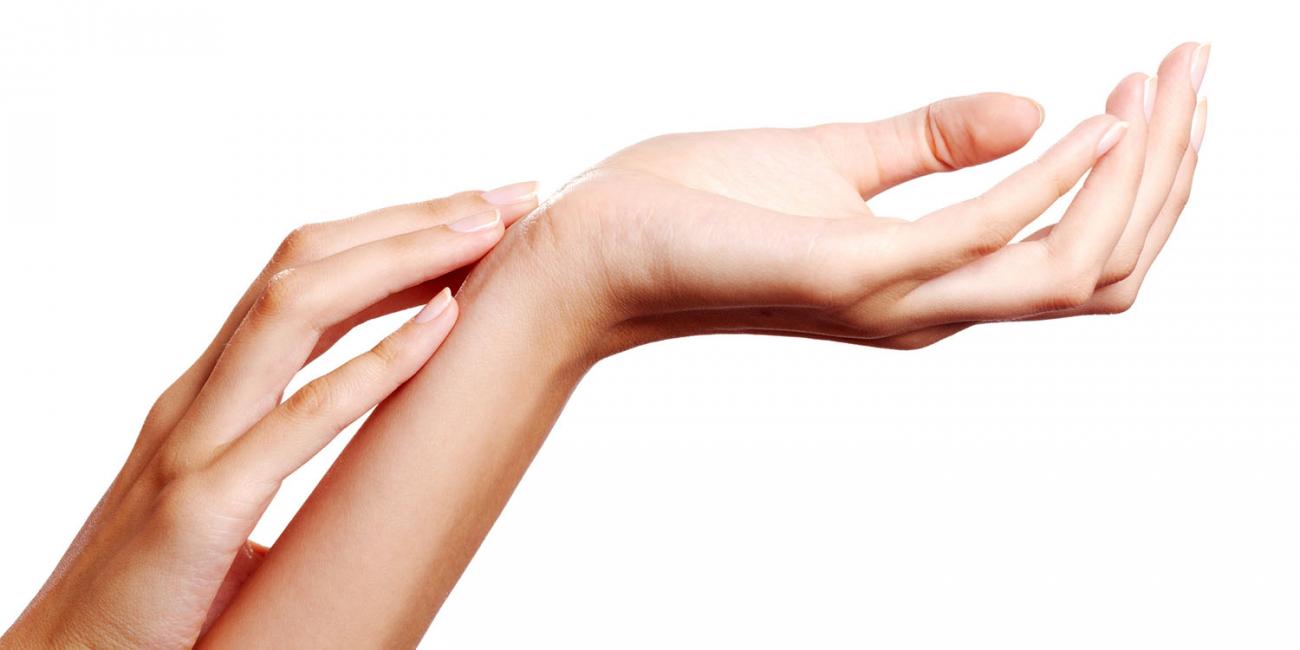What Are Your Fingernails Trying To Tell You
Are you nails experiencing a texture or color change? Learn what it may mean.
Changes in the appearance of fingernails may mean nothing or can mean many things. The following are some nail changes which may be associated with different illnesses.
Color changes
- White/pale nail bed can indicate anemia.
- White dots or marks on the nails can indicate zinc or other nutritional deficiencies.
- White nails can indicate liver disease.
- Bluish nails can indicate lack of oxygen.
- Yellow nails can indicate respiratory or nail fungal infection or any illness that slows nail growth.
- Brown or black streak/dot under the nail can indicate a bruise/trauma (it will move up as the nail grows) or may be skin cancer.
Texture changes
- Thick or misshapen nails can indicate a fungus, similar to "athlete's foot."
- Horizontal grooves or lines across the nail can indicate Illness has disrupted nail growth — usually caused by diabetes, circulatory disease, malnutrition or high fever.
- Pitting can indicate psoriasis.
- "Clubbing" or enlarged finger tips with curved nails can indicate many diseases, including lung cancer, inflammatory bowel disease or liver disease.
- Nails separating from the nail bed can indicate thyroid disease, infection, drug reactions or psoriasis.
- "Spoon nails" that curve into the nail bed and make a small cup or depression can indicate iron deficiency anemia.
- Splitting, weak or thickened
- Weak and/or splitting fingernails are a common problem, and in my experience usually improve with nutritional support and treating hormonal deficiencies.
- Discolored, thick or misshapen nails most often occur from nail fungal infections, but may also occur after injuries to the nail bed.
- Although the nails that are misshapen will stay that way, the good news is that they grow out and can be trimmed away. The key is to ensure that a healthy nail grows in to take its place. Your nails grow from the base (the little half moon at the bottom of your fingernails) out towards the fingertips, so they can eventually look healthy again.
Treatment
Weak or Splitting Nails
Get outstanding overall nutritional support with a good powdered multivitamin (see Energy Revitalization System). If needed, add extra biotin (250-1,000 mcg a day) and drink a glass of milk each day for the calcium. For most, the powdered multivitamin will be enough to help your nails.
If you have fatigue, weight gain or cold intolerance, see Hypothyroidism.
Have your physician check a blood test called a “DHEA-S.” Ignore the normal range. If the level is under 150 mcg/dl in females or under 300 mcg/dl in men, find a holistic practitioner who can guide you on DHEA hormone supplementation (available over-the-counter). Too much DHEA can cause acne or darkening of facial hair, so work with a holistic practitioner. Interestingly, DHEA sometimes also turns early graying hair back to its younger color (which is how it got the nickname “the fountain of youth hormone”).
Nail Fungal Infections
As noted above, the goal is to have the new nail be healthy as it grows in. Normally, the old infected nail also affects the new nail. Here are ways to prevent that.
- Rub tea tree oil on your fingernails morning and night. Tea tree oil is a natural antifungal. It can be found at most health food stores.
- Rub mentholatum (e.g., Vick’s Vapo® Rub or Vicks Vapor Rub from WalMart or most supermarkets) on your fingernails morning and night. This can be very effective after 3-6 weeks. Typically, what will happen is that in a matter of days after massaging Vicks Vapor Rub on your nail, the nail will start turning dark in color. The dark color means the Vicks is killing the fungus. As the nail grows out you can trim it and soon it will not only look healthy but will be fungus free.
For more information, visit HolisticBoard.com

